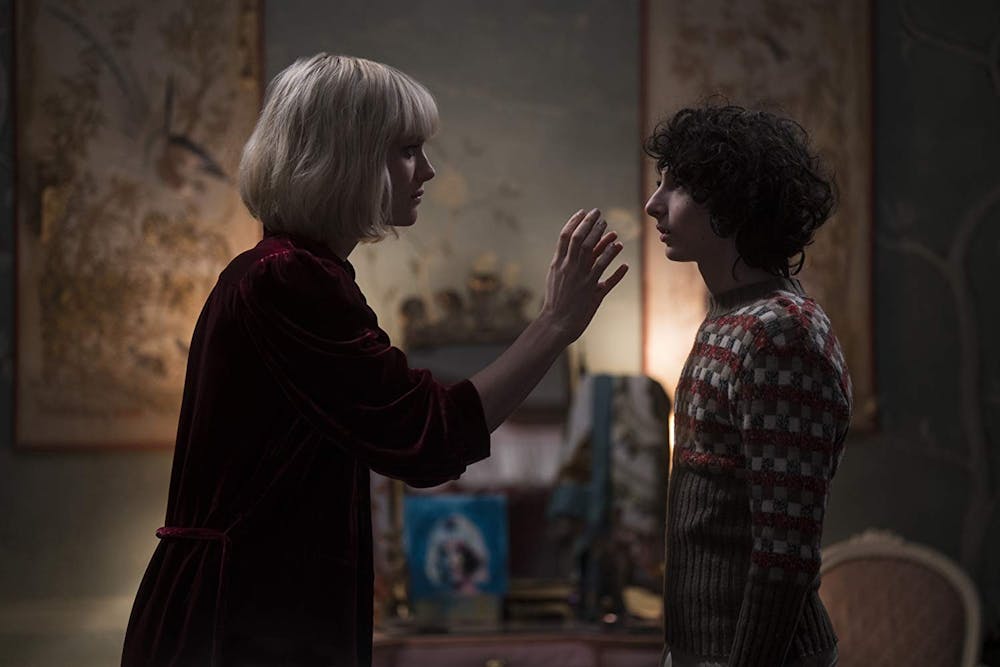In this day and age, it’s hardly surprising to see a film adaptation of classic horror literature in theaters. What is even less surprising is Hollywood presenting us with a case of “the book was better.” It may be an age-old complaint, especially from avid readers, but it has persisted for a reason.
The Turning is an adaptation of Henry James’ 1898 horror novella The Turn of the Screw, but in name only. All the basic ingredients of the story are there: A young woman named Kate is hired as a private tutor for Flora, a little girl in need of company following the death of her wealthy parents. At first, things are great between them until Flora’s older brother, Miles, arrives home from boarding school. The strained relationship between Kate and Miles, as well as the presence of a disapproving housekeeper, puts a lot of pressure on Kate. The fact that the house also seems to be haunted by the ghosts of two former staff members also isn’t helping.
On paper, this seems like an ideal setup for a classic historical horror story. It has orphans, a creepy old house, mysterious deaths, and most importantly, people who refuse to talk about them. What more could you want? Unfortunately, somewhere in the process of adapting it from page and screen, something went screwy. There are so many trademarks of a typical scary movie: an abundance of cheap jump scares, multiple creepy dolls and mannequins, and fake-out dream sequences, just to name a few. The Turning actually ignores several of the story elements of the novella it’s based on, not in favor of being its own entity, but more in favor of being like every other horror movie you may have seen in the last decade.
A surprisingly good look and sound

Image from IMDb
A notable change from the source material is that the story, originally written in the late 1890s, is updated to the early 1990s, but this could be considered an improvement, as it makes way for one of the movie’s best features; its soundtrack. The movie’s soundtrack features a lot of moody indie rock, both modern and vintage. Genre figurehead Courtney Love makes an appearance, as well as some of the staples of modern indie rock such as Soccer Mommy and Girl in Red. Mitski’s new song “Cop Car” is an especially atmospheric track that fits perfectly with the movie’s gloomy aesthetic.
Speaking of which, The Turning may not have much going for it in terms of plot, but it has a look and it sticks to it. The film’s bleak blue and grey color palette is well suited for the hostile environment it strives to create, and the decaying manor house and gardens make for a beautiful, eerie setting. The film’s director, Floria Sigismondi, is best known for over-the-top music videos such as Marilyn Manson’s “The Beautiful People” and David Bowie’s “The Stars (Are Out Tonight).” The film clearly owes its good looks to her, but a surreal atmosphere and Gothic style aren’t quite enough to carry an audience through an hour and a half.
Great actors that deserve a better movie
Other highlights include the excellent performances from lead actress Mackenzie Davis as Kate and Brooklyn Prince as Flora. Flora is sweet, genuine, and acts like a real kid rather than a dispenser of spooky lines for the trailer, as a lot of child characters in horror movies tend to do. She’s very well-written, and Prince’s acting makes her seem that much more real. The close relationship between the teacher and her student is a welcome bright spot in the movie’s perpetual gloom. Without it, it would be hard to care if any of these people made it out alright in the end.

Image from IMDb
Finn Wolfhard also gives a reliably good performance as the less charming older brother. His portrayal of the troubled, sarcastic rich kid was quite believable, although not very pleasant. Unless you’re really sympathetic to spoiled teenage boys who make a lot of inappropriate, borderline sexual comments to their sister’s live-in tutor, there might not be much of a reason to want good things for his character.
Overall, The Turning seems to lack much of a story, message, or point. It’s mostly a long series of jumpscares, inappropriate comments from Finn Wolfhard, and mental breakdowns. Hardly anything is explained or explored deeper than necessary for surface level scares. It all leads up to a very abrupt and ultimately unsatisfying end. I even stayed in the theatre later than I normally would, hoping there would be an after-credits scene to clear things up, but no such luck. It’s the kind of ending that would normally be prime material for a barrage of “Ending Explained” videos, if there were anything in the movie that provided enough interest to want an explanation. However, there are some salvageable elements to be found in the soundtrack and look of the film. Fans of Courtney Love, Mitski, or Lawrence Rothman may especially find themselves enjoying the soundtrack.

Images: IMDb
Featured Image: IMDb
For more entertainment related content, visit us at Byte BSU!



















